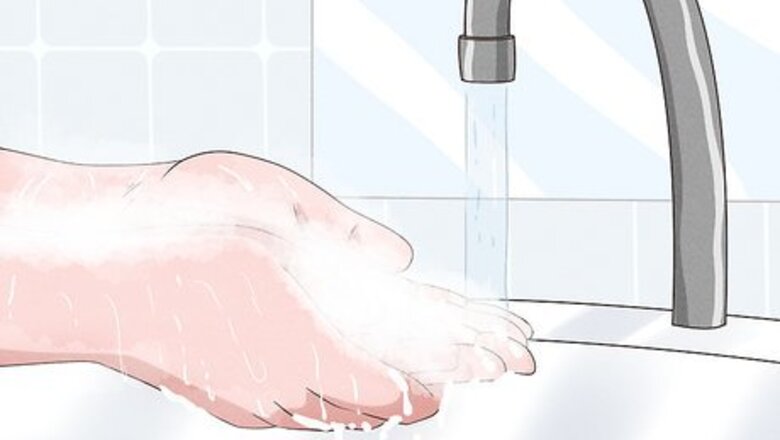
views
Wash your hands before you sit down.
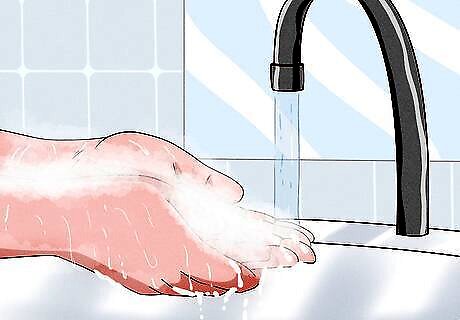
Make sure your hands are clean before you dig in. Head to the restroom and give your hands a good scrubbing with soap and water before you sit down. If you’re teaching table manners to a kid, this is a good time to tell them how long to wash their hands and how hard to scrub. Some fancier restaurants will even bring you a dish of water to dip your hands in. However, this is usually reserved for fine dining.
Put your phone on silent.
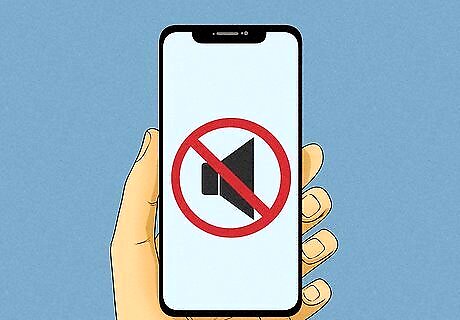
No one wants to be interrupted by a ringing phone. Before you head to the table, put your phone on silent or vibrate and stash it away in a pocket or a purse. If you get an important phone call, excuse yourself from the table to take it so you don’t disturb any other guests. Try to keep your phone off the table while you eat. It can be a distraction to keep it so close to the food.
Wait for everyone to be seated.
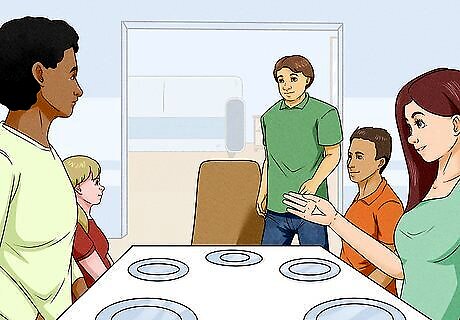
This includes the host, too! If you’re at a dinner party, let everyone get settled before you touch your place setting. The same goes for a restaurant—once your party is seated, you can start getting settled. If there isn’t assigned seating, give the guest of honor or the host the best seat at the table (usually the seat at the head of the table). Everyone else can sit wherever they’d like to. Always enter and leave the dining chair from it’s right in a restaurant and at a formal dinner. Before doing so help the lady on your right or left by pulling her chair back when she starts sitting and the pushing it in. Men in military enter the chair from left and leave from right as formal dinner is considered a parade.
Place your napkin on your lap.
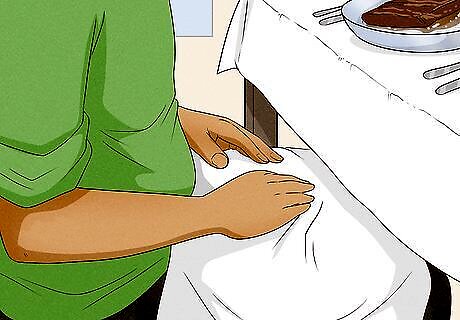
It will catch any food that falls off your fork. Unfold your napkin and gently place it over your entire lap, smoothing it down so it lays flat. You can use your napkin throughout your meal to wipe your hands or your mouth as you need to. The napkin is the very first thing you want to touch when sitting down. If you need to leave the table, put your napkin on the chair, not on the table. It will signal that you’re coming back and you aren’t finished with your food.
Pass all food dishes to the right.
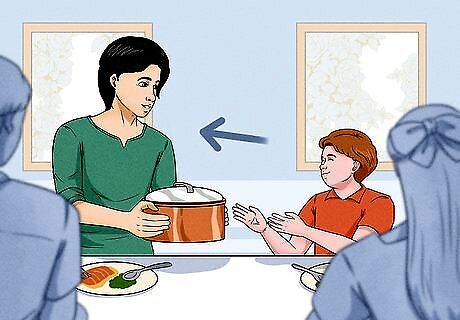
If you’re serving your own food, keep passing dishes around. Once you’ve taken enough food, hand the dish off to the person on your right. Try not to reach over anyone to get more food, and politely ask them to pass you a dish if you’d like more. If there’s bread on the table, cut some off the loaf and offer the pieces to the person on your left before passing it on.
Don’t eat until the host eats.
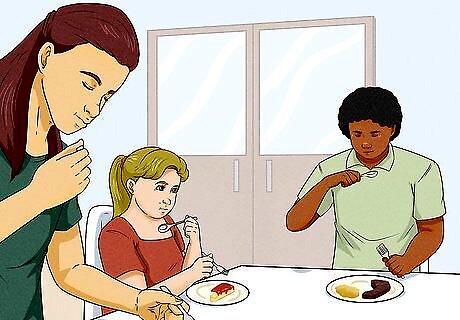
If there’s no host, wait for the guest of honor to start eating. Once they take their first bite, you can go ahead and dig in! Some people also like to say grace or make a toast before a meal, so you may have to wait on that, too. If you’re having food with your family, wait until the person who made the food starts eating.
Use the utensils from the outside in.
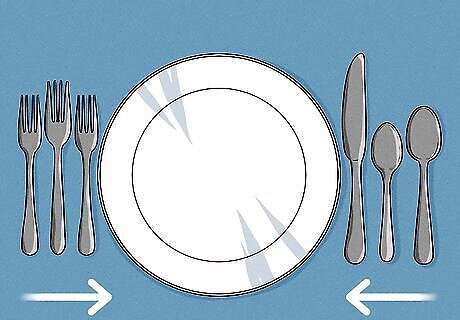
Fine dining may have more than one set of utensils. If you aren’t sure which one to use, a good rule of thumb is just to work from the outside in. As you eat through different courses, you’ll use different spoons or forks. If you’re just at a dinner party with friends and family, you probably won’t have to worry about multiple sets of utensils. On your left, the utensils from the outside in are the salad fork, the dinner fork, and the dessert fork. On your right, you'll have a soup spoon, then a tea spoon, then a dinner knife.
Keep your elbows off the table.

Tuck them in by your sides while you eat. Putting your elbows on the table takes up a lot of space, and it’s considered bad manners. If you have any older relatives at the table, they might even call you out on it! If you aren’t eating or you’re in between courses, it’s okay to rest your elbows on the table. The no elbows rule only applies when utensils are in use.
Eat slowly and with your mouth closed.
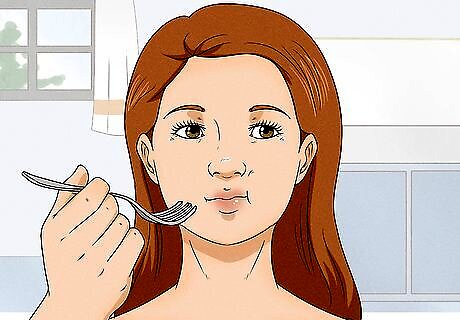
Try not to show anyone your food as you chew. If you want to say something, finish what’s in your mouth and swallow before speaking up. Eat your food slowly and one bite at a time to avoid wolfing anything down. The same goes for drinking: try to take small sips and avoid slurping or splashing your drink.
Say “please” and “thank you.”

This includes thanking the host at the end of the meal. Make sure you’re polite and respectful to everyone around you when you ask them to pass you food or hand you more bread. If you’re being served your food at a restaurant, say thank you to the servers as they bring you items.
Take part in the conversation.
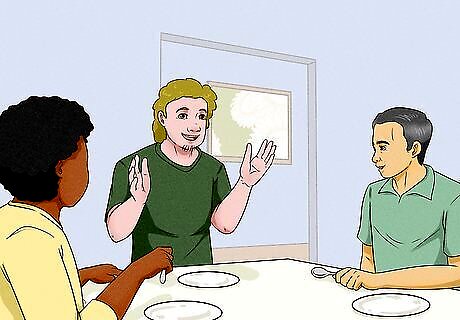
A dinner party is about more than just food. As you eat, be sure to talk to the other guests around you and join in on the topic of conversation. Be sure to chew and swallow your food thoroughly before you start talking, and listen attentively to those around you. If you don’t know the people sitting next to you, introduce yourself and ask them how they know the host. That should be enough to get a lively conversation going!
Cover your mouth if you need to burp.
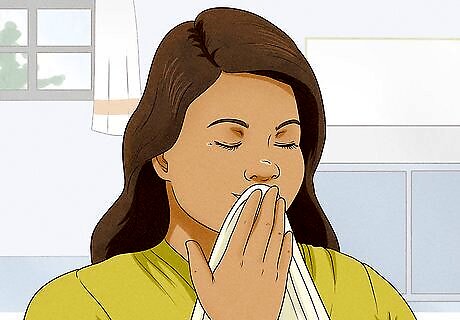
Burping happens, and that’s okay. If you feel a burp coming on, quickly cover your mouth with your napkin and keep your mouth closed so it isn’t loud. When you’re done, just say “excuse me” and keep eating. If you get the hiccups and they won’t go away, it’s polite to leave the table until they stop.
Pick up your utensils if you drop them.

Then, ask for a new one. If you can’t reach the utensils you dropped, let the waiter or the host know as you request a new one. The same thing goes for your napkin: if it touches the floor, just ask for a replacement. If you drop any food, discreetly pick it up with your napkin. Then, ask your waiter for a new napkin.
Put your utensils on your plate when you’re are taking a break/pause or when you are done.
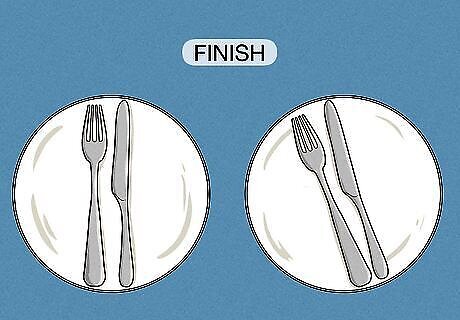
It will make cleanup a lot easier. Try to place them both in the center of your plate so they don’t fall off. If you’re at a restaurant, it will signal to the waiter that you’re ready for your plate to be taken away. You can cross your utensils when taking a break or pausing or waiting for more food. The tines of the fork should face down and blade of the fork should face inward. If you are using a table spoon, place it’s bowel facing up. If you are done eating, just place them side by side at 6’O clock position in UK and at 4’O clock position elsewhere. Also put your napkin on the table to the left side of your plate.
Help clear the table at the end of the meal.
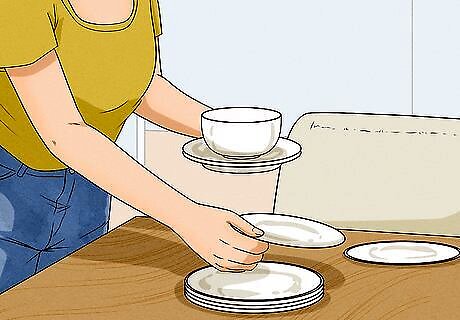
If you’re at a family dinner, pitch in for the cleanup. Help gather plates, napkins, and cups to bring to the kitchen. If you’re really feeling polite, you could even offer to wash the dishes! The host will really appreciate it, and you might just land an invite to the next dinner party.



















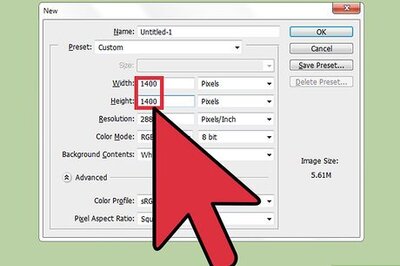
Comments
0 comment